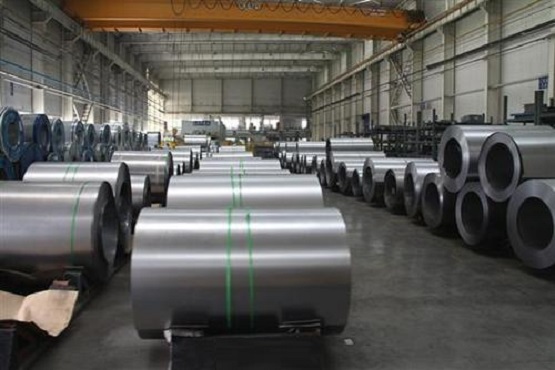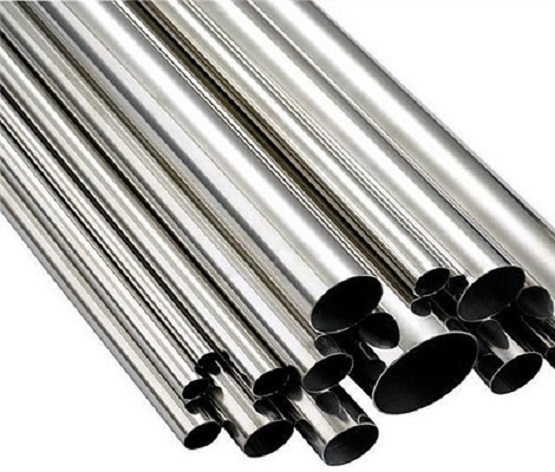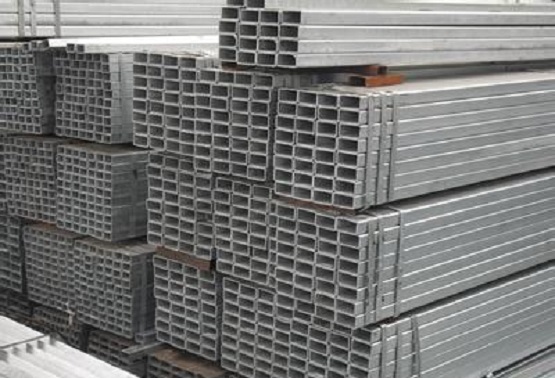When we talk about the basic production process of steel, first is obtain iron ore, coke coal and other raw materials, and then they are refined into iron in the ironmaking blast furnace; the next step is to use raw iron as raw material and smelt into steel with different steelmaking furnaces; The shape of the ingot or continuous casting blank is sent to the rolling mill for rolling, or forged, and finally becomes available steel of various shapes.
1. Iron ore mining and processing
From the day the Earth was born, the minerals that iron aggregated were distributed unevenly around the world.
The iron element exists in nature in the state of a compound, and is particularly present in a state in which iron oxide is present in a particularly large amount. In theory, any ore containing iron or iron compounds can be called iron ore. However, industrially or commercially, iron ore not only contains iron, but must have a relatively high iron content to be of value. There are two types of hematite and magnetite, which have better smelting performance and utilization value.

Hematite: Hematite is dark red or brown. Its main component is ferric oxide Fe2O3, its specific gravity is about 5.26, most of which contain less than 70% of Fe, and more than 30% of O. It is the most important iron. Type of ore.
Magnetite: It is a black or gray or metallic luster. It is a magnetite. Its main component is Fe3O4, which has a specific gravity of about 5.15. The theoretical maximum Fe content is 72.4%, and the minimum O content is 27.6%. It is also the main type of iron ore.
Some iron ore is buried shallow, and it is open-pit mining. It is like digging a large pit for the earth to open a skylight, and the mining cost is relatively low. Some deep iron ore mines can only be mined in underground tunnels, similar to the method of mining underground coal.
However, there are not many ore in the world with more than 66% iron. The “grade” (that is, the iron content) of many iron ore is low, which may be between 30% and 50%. The stone composition in the original ore is too high. It cannot be used directly for iron making. Therefore, in order to increase the iron content in the ore raw materials, it is necessary to use mechanical equipment to remove some of the stone impurities and further enrich the iron-containing components. This is to carry out “crushing” and “mineralization”, and the beneficiation process requires a large amount of water.
In general, a slightly smaller hematite field can process about 2,000 to 3,000 tons of “iron concentrate” containing about 60% of iron per day. The iron concentrate is in the form of powder, generally called iron ore powder, and the high iron content can reach 62-66%. Iron ore fines cannot be directly smelted into the blast furnace. Just as people only burn briquettes in heating stoves, they must be artificially pinched into blocks to increase venting and reduction. The internationally accepted method is secondary processing to manufacture “sinter ore” and “pellet ore”. These two “artificial lump ore” simultaneously increase the compressive strength and are beneficial to blast furnace smelting.
The fuel added to the iron concentrate raw material is ignited after high temperature combustion, and a large amount of heat is released to melt the mineral in the layer. As the combustion layer moves down and the cold air passes, the molten liquid phase formed at 1000-1100 ° C is It is cooled and recrystallized to solidify into a large sintered ore having a mesh structure.
The processing of the pellets is the same as shaking the Yuanxiao, mixing the ingredients with the concentrate to “build the ball”, and then it is also roasting on the machine, and its specifications are not as large as the sinter. Sinter and pellets are ore raw materials that can be added to the blast furnace for smelting.
2. coal mining coke
Now more than 95% of the world’s steel production is still using the coke ironmaking method invented by British Darby 300 years ago. Therefore, iron is required to be coke, mainly used as fuel, and coke is also a reducing agent. Without it, it cannot be used. The iron is replaced from iron oxide.
Coke is not a mineral, but it is mixed with a certain number of coals. The general ratio is 25-30% for fat coal, 30-35% for coking coal, and then carbonized in a coke oven for 12-24 hours. Forming a hard porous coke.
The appearance of coke is similar to that of coal, but its high calorific value is purer than coal, almost pure carbon, and its weight is more than half lighter than coal, because most of the impurities are removed.

3. blast furnace ironmaking
Blast furnace ironmaking is to combine iron ore with fuel (coke has a dual role, once the fuel, two as a reducing agent), and the compound limestone, etc., melt in the blast furnace, so that it undergoes a reduction reaction at a high temperature, and is reduced from iron oxide. The “raw iron”, which is mainly composed of iron and contains some carbon, is iron water.
If molten iron is not sent directly to steelmaking, it can also be cast into pig iron, stored or sold on the market.
However, because the carbon content of the pig iron is more than 2%, it is very brittle and will fall off when it falls. Directly cast iron can be used to cast a variety of cast iron products, such as diesel crankshafts, cast iron pipes and so on.
4. ironmaking into steel
The fundamental difference between the iron and steel properties is the carbon content, and the carbon content is less than 2% is the real “steel.” The so-called “steel making” is to decarbonize pig iron during high-temperature smelting and turn iron into steel. Commonly used steelmaking equipment is a converter or an electric furnace.
The raw materials for converter steelmaking include about 85% of molten iron and 10-15% of scrap steel, and then blown into oxygen to support combustion. Without adding any fuel, the steel is refining in a short time by relying on the physical heat of the hot molten iron itself. Electric furnace steelmaking relies on external energy (electric energy) to heat and melt scrap steel and pig iron. It does not use molten iron to make steel.
5. casting billet
At present, in addition to the production of special steel and large steel castings, a small amount of cast steel ingots are needed for forging processing. The large-scale production of ordinary steel at home and abroad has basically abandoned the old process of casting steel ingots – blanking – rolling materials, most of which are adopted. The method of casting molten steel into a billet and then rolling it is called “continuous casting”.
If you do not wait for the billet to cool down, do not land in the middle, and directly feed it into the rolling mill, you can manufacture the steel products you need by “one fire”. If the billet is cooled in the middle and stored on the ground, the billet can be a commodity for sale.
A small number of enterprises are more advanced, able to adopt advanced “near-end” continuous casting method, directly cast steel into a very thin steel strip, or billet, reduce the processing of rolling mills, save energy and increase efficiency.

6. billet rolling materials
There are many kinds of ordinary steels. There are various types of steel, rebar, steel, steel, steel, etc. Some have to be hot-processed, and some need cold processing. Therefore, it is necessary to use equipment for rolling steel, called “rolling mill. “.
Under the rolling of the rolling mill, the billet is coarsened and coarser, closer to the final diameter of the product, and sent to the cold bed of the bar for cooling. Most of the bars are used to machine mechanical structural parts.
If a patterned roll is used on the last bar mill, a rebar can be produced, which is called a “rebar”.
Hot rolling mills are used to produce rolled steel. The hot coil is first rolled out, and then the cold rolled steel coil having a higher finish is further processed by cold rolling and reprocessed into a coated coil. This kind of thin steel has no broken ends in the middle, which is very advantageous for cutting and cutting on steel plates like garments, and making various deformation products such as steel plates for electric appliances and automobile casings.
7. forged steel
According to different needs, some steels with special properties or special shapes cannot be processed by rolling mills that produce large quantities of products, but must be produced in small batches or even only one or two pieces. Therefore, after steelmaking, it is necessary to cast a number of steel ingots, and then, after heating, special shaped steels are formed on special processing equipment such as die forging machines and hydraulic machines. In particular, more than half of this type of steel is not produced in steel companies, and their origin is large and medium-sized machinery factories.
Sino east is a professional produces steel factory, always provides high quality and competitive price steel products to the oversea buyers,such as Galvanized Steel Pipe ,Stainless Steel Pipe,Seamless Steel Pipe,Square Steel Pipe,Galvanized Steel Coil,Steel Sheet,etc.
